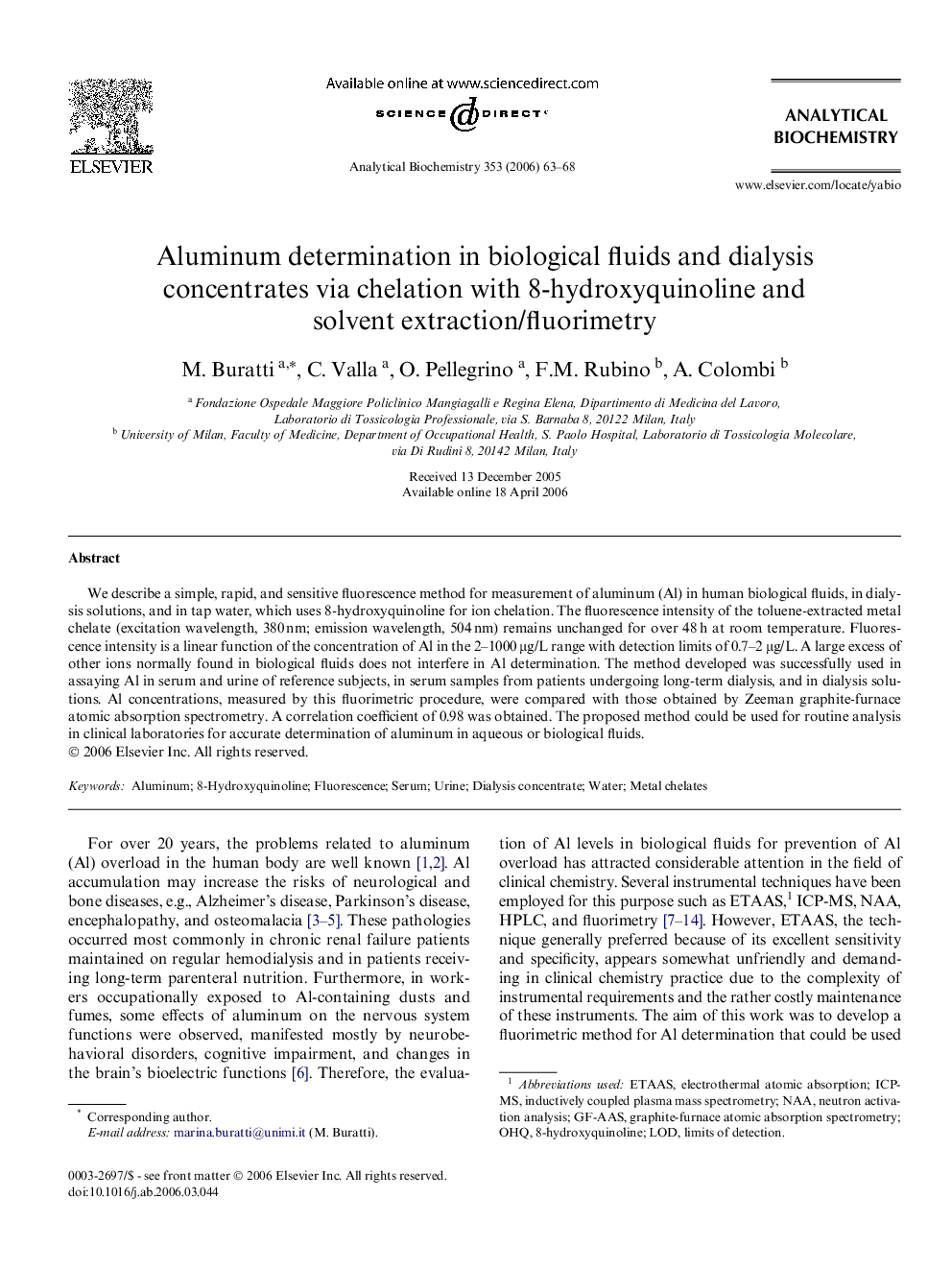| Article ID | Journal | Published Year | Pages | File Type |
|---|---|---|---|---|
| 1177567 | Analytical Biochemistry | 2006 | 6 Pages |
We describe a simple, rapid, and sensitive fluorescence method for measurement of aluminum (Al) in human biological fluids, in dialysis solutions, and in tap water, which uses 8-hydroxyquinoline for ion chelation. The fluorescence intensity of the toluene-extracted metal chelate (excitation wavelength, 380 nm; emission wavelength, 504 nm) remains unchanged for over 48 h at room temperature. Fluorescence intensity is a linear function of the concentration of Al in the 2–1000 μg/L range with detection limits of 0.7–2 μg/L. A large excess of other ions normally found in biological fluids does not interfere in Al determination. The method developed was successfully used in assaying Al in serum and urine of reference subjects, in serum samples from patients undergoing long-term dialysis, and in dialysis solutions. Al concentrations, measured by this fluorimetric procedure, were compared with those obtained by Zeeman graphite-furnace atomic absorption spectrometry. A correlation coefficient of 0.98 was obtained. The proposed method could be used for routine analysis in clinical laboratories for accurate determination of aluminum in aqueous or biological fluids.
